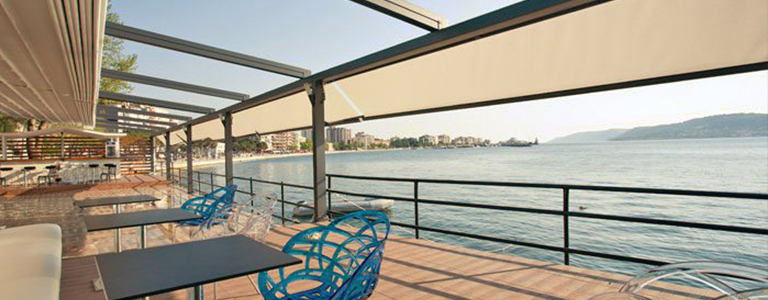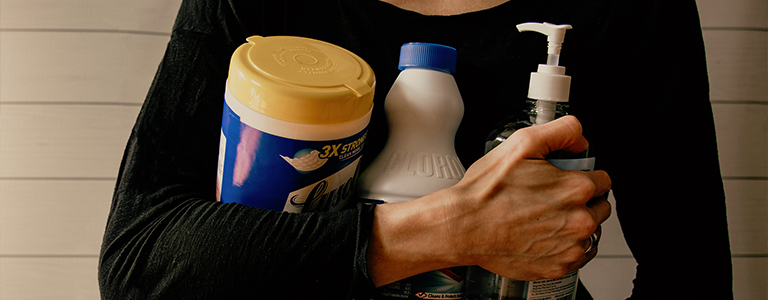How to clean your awnings
4 mins readSo, you have invested in awnings or are looking into the cost of upkeep before installing awnings. As long as you’re keeping up with your regular cleaning practices, cleaning your awnings is not that difficult.
Your awnings act as a protective barrier and therefore might get weathered over time, especially external awnings in Sydney due to the coastal climate. Some dirt is unavoidable but can be easily removed.
It is essential to clean your awnings regularly to prevent damages and the possible spread of mildew which is a health risk.
Cleaning steps to make your awning good as new
Before we get into some tips to ensure your dazzling, clean awnings, it is essential to set aside some time for this simple cleaning process.
Your awnings should be cleaned once a month in coastal regions and once every few months for in inland areas. Once a year, your awnings should be deep cleaned to preserve their lifespan.
Firstly, prepare the area around your awnings before you get into the cleaning process. Brush immediate dirt off with a broom and remove leaves, cobwebs and debris to ensure a thorough cleaning process.
Secondly, there are a variety of washing methods you can use. If your awning is smaller and made of a machine-washable fabric, you could pop the material in the washing machine.
Alternatively, using a hose, broom or soap and sponge have proven to be reliable and effective cleaning methods. This method is best suited for larger awnings. You could also use a pressure washer on a light setting to get the job done quicker.
It is critical to be cautious when using chemicals to clean your awnings. The materials used for awnings often have a protective layer over them and some chemicals can erode that protective layer, causing damage or mildew to grow.
Thirdly, scrubbing lightly with a broom or soft brush will thoroughly clean off any dirt in the fabric. Take care not to press hard or scrub too abrasively as you may damage the material.
The underside of your awning is where lots of bugs get trapped or make their nest, so, make sure you clean all areas, including the bottom of your awning. The following step is to rinse your awning down with cold water and a hose.
Then, your awning needs to dry. Make sure you select a 3-4-day period of warm and dry weather to allow the fabric to dry most effectively. It is vital to remember not to roll up or stow away your awning when it is wet, as it can be damaged or essentially undo your cleaning efforts.
Lastly, you should invest in after-clean protection. There are many products available such as a UV protectant, waterproofing agent or just a general sealant.
How to clean mould and mildew
One of the leading problems people often find with awnings in coastal regions, such as Sydney, is the presence of mould and mildew.
If you have an outdoor retractable awning, you’ve likely encountered this fungal infestation before.
There is a difference between mould and mildew, and this is important to recognise as they both require different degrees of cleaning efforts. Mould is darker in colour, fuzzy or slimy whereas mildew Is lighter in colour, usually white or grey, but can turn black over time.
The most substantial difference though is that mould grows within the fabric and is hefty to remove, while mildew usually sits on the surface of the material. The adverse effects of these fungi can result in coughing, headache and respiratory problems. With the case of mould, more severe health risks come into play.
Most people with awnings in Sydney, encounter mildew. Even though it is less harmful of the two, it still poses a health risk.
To remove mildew, you can mix one (1) cup of bleach and a quarter (¼) cup mild soap per four (4) litres of water. Alternatively, you can buy mildew remover.
Scrub with a soft-bristle brush and let this soak into the fabric. Rinse and air dry afterwards.
Make sure you work in a well-ventilated area and wear gloves and a facemask to prevent inhaling mildew spores or fumes from the cleaning product.
Regular cleaning practices
Regular cleaning practices maximise the lifespan of your awnings. Keeping up with cleaning them will prevent any fungi, permanent stains or water damage.
An easy way to prevent these damages is to regularly hose down and dry your awning when it looks dirty. Gently brush off dust and dirt too whenever you notice any build-up.
If you’re interested in purchasing awnings for your home or business, talk to Eureka Awnings, one of Sydney’s leading awning installers. We have a wide range of high-quality awnings for sale, and we’ll work with you to find the one that will best suit your needs.
If you’d like to learn more, give us a call on 1300 789 886 or email us at [email protected] today.


